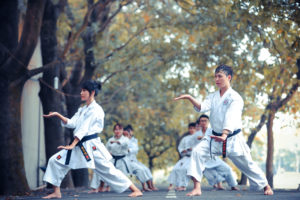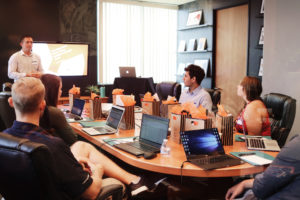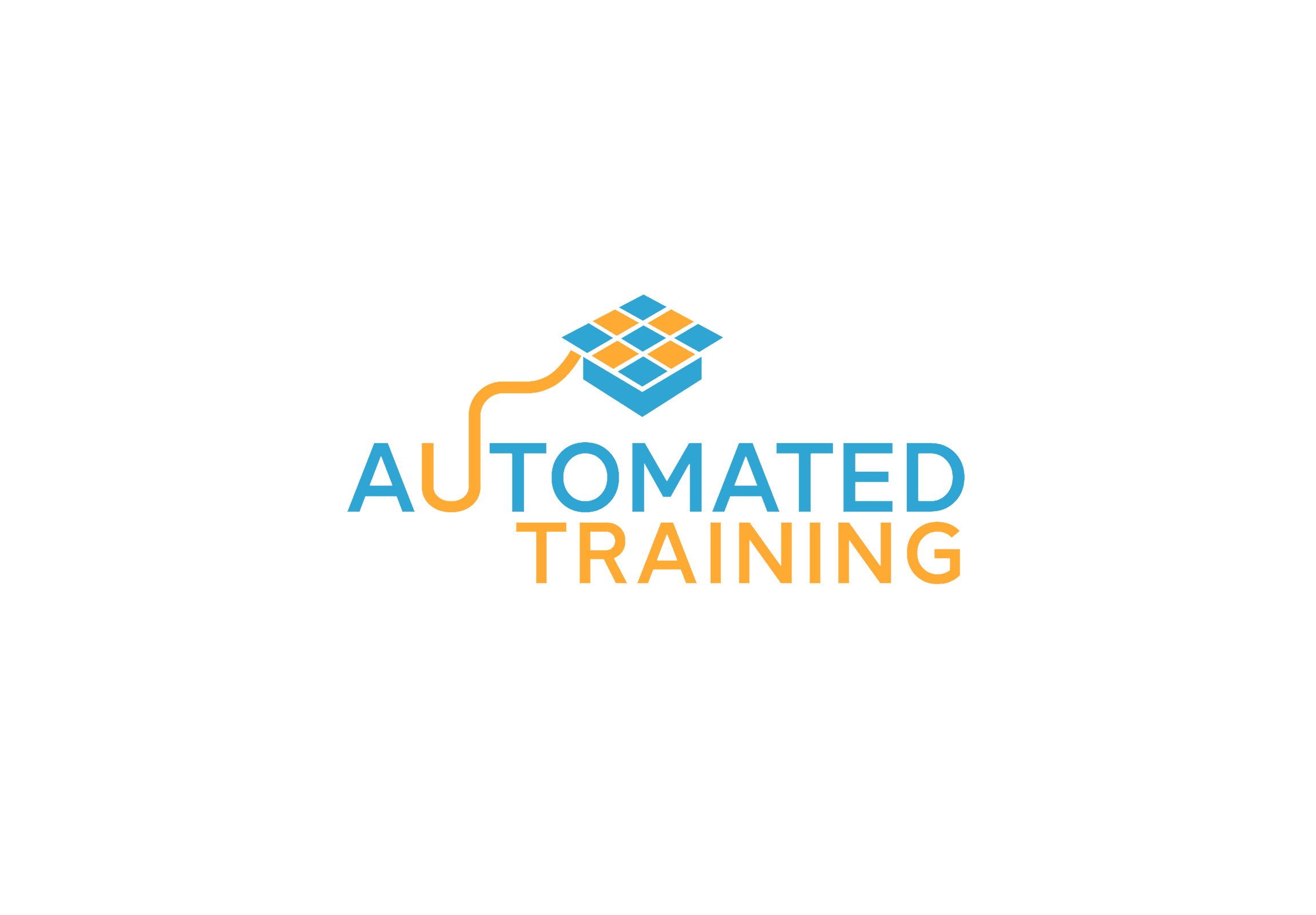The importance of practice in training employees is underestimated. The current training method: presentation and face-to-face training puts weight on the presentation of the knowledge but not on the practice. The lecturing training method doesn’t offer time for practice and has the lowest retention rate but this is a different topic. Presentations and lectures barely offer some minutes for some exercises but those exercises, are exercises and not practice. And it is still being used massively.
Because “Knowledge without experience is philosophy, and experience without knowledge is ignorance. The interplay between the two produces wisdom.“(Joe Dispenza)
Learning new knowledge is only the first step. Is the preparation for practice and experience. Everything we learn, we learn to practice and apply in our life … otherwise, why even bother learning?
The quote above underlines the importance of the first two pillars of learning:
1. acquire the information (1. st pillar of learning)
2. apply and experience (2. nd pillar of learning)
Would you be able to drive a bicycle without making the experience of driving it? Imagine that you learn to drive a bicycle only by reading books or by someone explaining it to you and without actually practicing it. Besides, what would be the point of learning something if not to experience it?
The importance of practice in training and learning
In addition to learning, the second way we build synaptic circuits/neural networks is through practice and experience. Practice is the second way of changing the brain. Experience not only enriches the brain but makes the connections between neurons stronger and last longer.
“Efficient learning means refusing passivity, engaging, exploring and actively generating hypotheses and testing them on the outside world“. (Stanislas Dehaene)
Practice/experience/learning by doing is also known as embodied cognition. Is based on the idea that our representations of a concept or event involve perceptual, and motoric re-experiencing. Not only does the mind influence the body but also the body influences the mind. In simple words, when it comes to learning, embodied cognition means HANDS-ON!
But wait, practice alone is not enough! We have first to actively generate hypotheses about what is going to happen and then test or experience if we are right. This step is important in the preparation of the 3rd pillar of learning: corrective feedback (learning from mistakes). If we don’t formulate clear expectations before the experience, there is not much to conclude about the result.
We have a special memory dedicated to experiences (practice)
Did you know that out of the 4 types of memory that humans have? One of those memories is dedicated to personal experience. Those are the events that we experience together with the involved people, places, environment, and time. Endel Tulving a psychologist from the University of Toronto has called the type of learning from experience and practice, episodic memory.
The brain stores information in episodic memory through a different neurological process than in semantic memory, where we learn facts. It also recalls more easily information/memories from the episodic one than from the semantic one. Because sensory inputs and feelings play a significant role. The reason for this is explained by Joe Dispenza in the following manner:
“The release of different brain chemicals produces specific feelings; consequently, the end product of every experience is a feeling or an emotion. Feelings are chemical memories. Therefore, we can remember experiences better because we remember how they felt” (Joe Dispenza – Evolve your brain)
The role of feelings in memory formation

It is the combination of what we learn, what we experience, AND what we feel that form long-lasting memories. Feelings and emotions that accompany an experience, even when those feelings and emotions are negative, seal the memory with a particular chemical signature. This signature works like a trigger. When we remember the experience we will feel the exact same way as we did at the time of the event.
“Nearly everything we learn, experience, and remember is associated with a whole host of associated bits of information and feelings stored in our neocortex” (Joe Dispenza)
To understand the importance of practice in learning we have to think of our evolution. Without being able to learn from experiences we would not be able to adapt. Or change our behavior in the next similar situation; actually we wouldn’t have survived.
The importance of correct practice for efficient training/learning
Different types of acquiring information bring different levels of retention within. The learning pyramid exposes the percentage of those values, putting practice in the second position with 75% retention, followed by teaching with 90%. But does any kind of practice in training suffice to support the learning?
The problem is that nowadays “I do and I understand” is not enough anymore. We only remember what we rehearse, the things we see, again and again. The things we do over and over.
Why?
Because we get too much information. The information increased at a higher rate than the brain’s capacity to record and retain it. “Every two days now we create as much information as we did from the dawn of civilization up until 2003, according to Eric Schmidt (CEO Google).”( https://techcrunch.com/).
Our brain is a deletion machine not a storing machine anymore.
“We have to prune memories relentlessly, and the easiest memories to prune are the ones that are random noise” (Seth Godin)
Don’t let your hard-earned information become random noise. In order to understand whatever you are learning, you must do, apply, practice, and experience.
Employees learn to apply not reproduce as students learn for their exams. If you learn to apply the reciprocal of the theorem is also valid: apply to learn!
1.Repeated practice

Bruce Lee about the importance of practice in training:
“ I do not fear the man who practiced 10 000 kicks ones, but I fear the man who practiced one kick 10 000 times“
This is the power of practice and repeated practice. But here is also a trick, actually a bad practice to be avoided. Most of us believe that mass practice burns skills into memory. Not true! There are studies that show that practice is far more effective when it’s broken into spaced-out periods. When is varied, meaning interleaved with other learning.
2. Spaced-out and varied practice
The varied type of practice is not comfortable because it means handling all types of input data.
For example, it is more comfortable to calculate the volume for only one geometric solid for a period of time than to mix the calculation for more geometric solids in one practice (like cube sphere, cylinder, and cone). But what is comfortable is not efficient. If it doesn’t “hurt” you are not doing anything new nor learning something new.
Exactly this type of varied practice was subject to an experiment. One group of students has practiced finding the volume of the geometric solids in a mass practice. They were finding the volume only for one geometric solid for a defined period of time, and only then for another solid geometric. While the second group practiced the volume calculation in a spaced and interleaved practice. The second group has shown superior results in the test that followed the practice. Learning means increased effort. And not only in acquiring information but also in practicing it.
The importance of practice in employee training
 One of the biggest mistakes, in my humble opinion, is that people ignore the importance of practice in training. And by practice, I do not refer to those 10 minutes when employees exercise some simple theoretical examples with the trainer. I mean applying the learned information immediately in a real project. In the current employee training/learning: the employees don’t have the appropriate amount of time to practice in the project what they are thought in the training. Because the way teaching is done, is not supporting it. The trainer does not have three days to wait for the employees to draw the sequence diagrams for one module. And then explain the next type of diagram, and wait again 3 days until the employees apply those diagrams to their module.
One of the biggest mistakes, in my humble opinion, is that people ignore the importance of practice in training. And by practice, I do not refer to those 10 minutes when employees exercise some simple theoretical examples with the trainer. I mean applying the learned information immediately in a real project. In the current employee training/learning: the employees don’t have the appropriate amount of time to practice in the project what they are thought in the training. Because the way teaching is done, is not supporting it. The trainer does not have three days to wait for the employees to draw the sequence diagrams for one module. And then explain the next type of diagram, and wait again 3 days until the employees apply those diagrams to their module.
Short exercises are not “practice” but merely examples
You will say: “It is not true! The trainers bring with them dedicated exercises for the topic they are teaching!”
And I will answer: ” Been there, done that! I have been trained in my 16 years engineer career on different topics. Each time I did my 20-minute exercises during the trainings. Everything was crystal clear during the training. But months later, when I had to apply the lesson to a real task, I did not know where to start. Or what procedure should be applied in that particular case? In most cases, I always start by looking for the PowerPoint of the training and then for the trainer. Nothing from the exercise that I practiced during the training seemed to be similar, or complex enough for the real task that I had to solve. Even more, when you have some rules deciding if you apply one or the other principle, you cannot remember those rules months later.
The time flew and roles changed, I become a trainer for some technical topics. Teaching some phases of the development process in automotive embedded. And based on my past experience, I tried to bring in training examples from real projects. In order to teach history not stories. I tried to be as close as possible to the real “exercises”/tasks.
So, I tried to transform the situations that I encountered in my tasks into a 10-20 minutes example for my trainees. It was the kind of “mission impossible”!!!! There is no way you can reduce a one-day task to a 20-minute example. Not in automotive embedded systems. So due to lack of time, I did what also my former trainers did. I reduced the example to a theoretical situation and created a “quick and dirty” exercise for the attendees.
Video trainings support repeated and interleaved practice applied in real projects
None of those 10 minutes examples during live training are neither repeated nor interleaved. The exercises during face-to-face training are one-time only, solved on the timer, and with no relevant impact. Those are not the type of practice that builds experience. The experience is built into the project. The problem is that when employees apply the knowledge to a real project, technical guidance is missing. This is when they need details, and they are not available, because the trainer is not available.
Video trainings offer the possibility to experience all types of situations in practice because the theory is always there available for the employees. Even if a specific solution or task is encountered only once in a while, the knowledge of solving it will not be forgotten. The theory/principle is available on video, also the appropriate example. And it can be applied correctly even when the expert on that matter/the trainer left the company.


